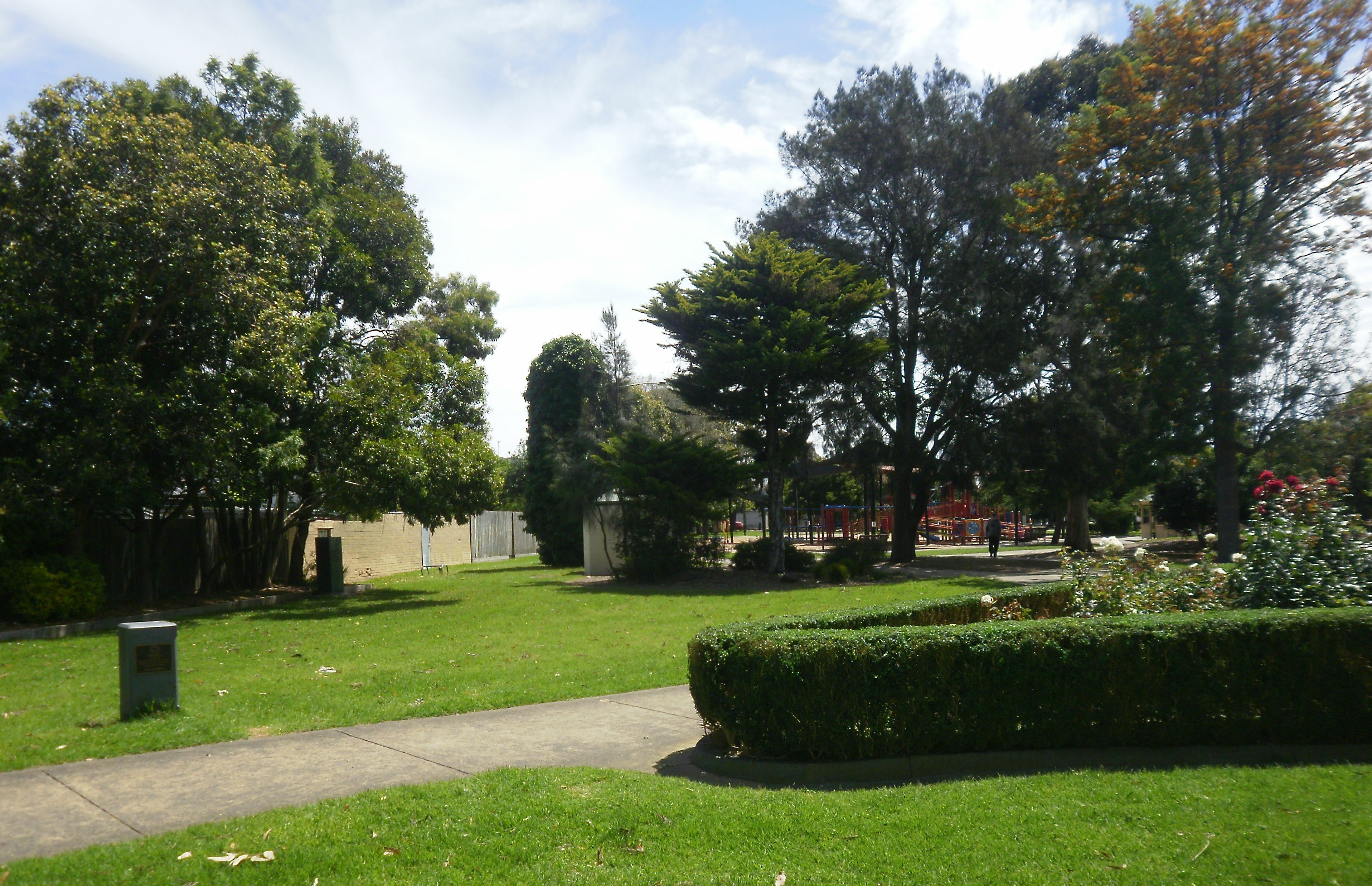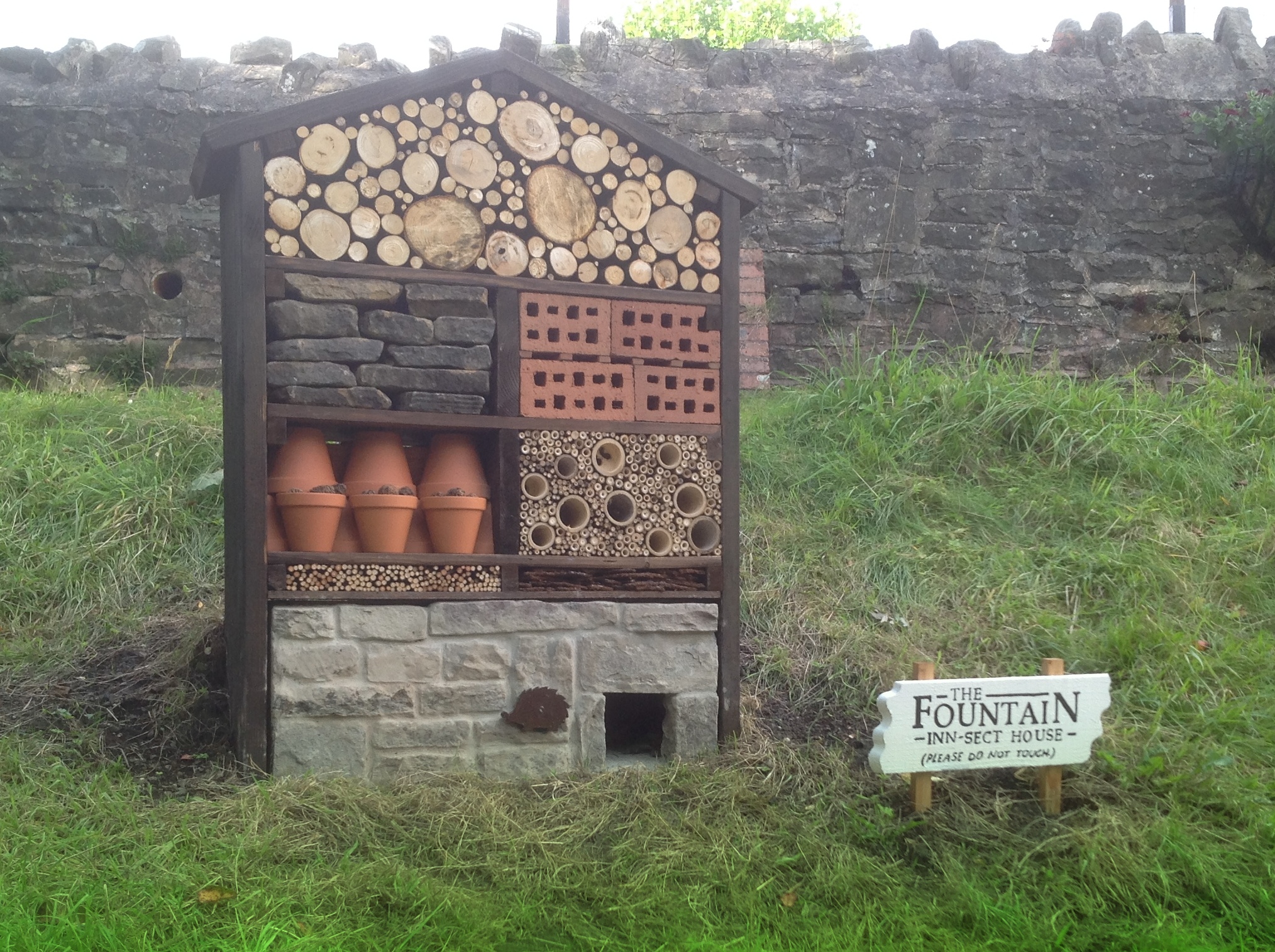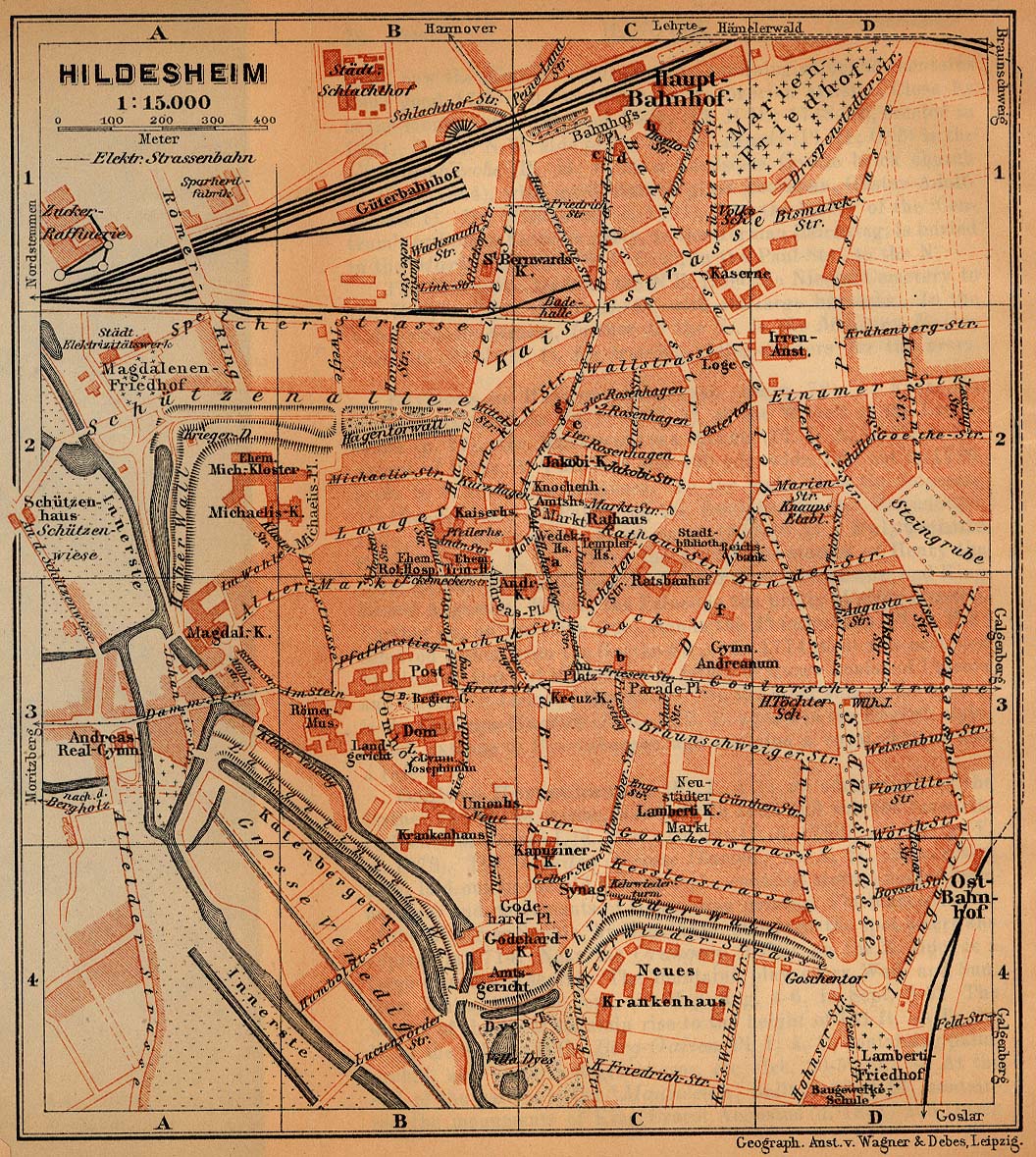|
Magdalenengarten
Magdalenengarten is a baroque park in Hildesheim in Lower Saxony, Germany. Location and size Magdalenengarten is in the western part of the historic city center of Hildesheim. On the west side a well-preserved part of the medieval moat and rampart can be seen. On the east side the garden joins the Michaelisplatz and St. Michael's Church, Hildesheim, St. Michael's Church, one of the most famous sights of Hildesheim which is a World Cultural Heritage. Magdalenenkirche, Hildesheim, St. Magdalena's Church, another sightworthy church is close by as well. The garden covers an area of about six acres. History Magdalenengarten is one of the oldest historic parks in Lower Saxony. Originally, the area was used by the nuns of a nearby monastery (''Magdalenenkloster''), which had been founded in 1224, to grow medicinal herbs and vegetables. The name refers to the monastery and its church, Saint Magdalena's Church which is in the south of the park. A small hill in the north of the herb gar ... [...More Info...] [...Related Items...] OR: [Wikipedia] [Google] [Baidu] |
Hildesheim
Hildesheim (; nds, Hilmessen, Hilmssen; la, Hildesia) is a city in Lower Saxony, Germany with 101,693 inhabitants. It is in the district of Hildesheim, about southeast of Hanover on the banks of the Innerste River, a small tributary of the Leine River. The Holy Roman Emperor Louis the Pious founded the Bishopric of Hildesheim in 815 and created the first settlement with a chapel on the so called ''Domhügel''. Hildesheim is situated on autobahn route 7, and hence is at the connection point of the North (Hamburg and beyond) with the South of Europe. With the Hildesheim Cathedral and the St. Michael's Church, Hildesheim became a UNESCO World Heritage Site in 1985. In 2015 the city and the diocese celebrated their 1200th anniversary. History Early years According to tradition, the city was named after its notorious founder ''Hildwin.'' The city is one of the oldest cities in Northern Germany, became the seat of the Bishopric of Hildesheim in 815 and may have ... [...More Info...] [...Related Items...] OR: [Wikipedia] [Google] [Baidu] |
Magdalenenkirche, Hildesheim
The Magdalenenkirche or St. Magdalenen (Church St. Mary Magdalene) is one of the churches in Hildesheim, Lower Saxony, Germany. The Magdalenenkirche is a Catholic church that was once a monastery church, and is situated in the old town at 25 Mühlenstraße. Founded in 1224, the current building was consecrated in 1294, the first Gothic building in Hildesheim. Extensive rebuilding took place in the 15th century and further additions were made in the 19th century. In the fifteenth century (ca. 1416) an altarpiece was created by an unknown artist, referred to as the Meister des Göttinger Barfüßeraltars depicting scenes from the life of Mary Magdalene (''Magdalenenlegende''). This has since been broken up and various panels are found in different museums. One of these, the '' Noli me tangere'' is in the Staatsgalerie Stuttgart. [...More Info...] [...Related Items...] OR: [Wikipedia] [Google] [Baidu] |
Ceres (mythology)
In ancient Roman religion, Ceres ( , ) was a goddess of agriculture, grain crops, fertility and motherly relationships.Room, Adrian, ''Who's Who in Classical Mythology'', p. 89-90. NTC Publishing 1990. . She was originally the central deity in Rome's so-called plebeian or Aventine Triad, then was paired with her daughter Proserpina in what Romans described as "the Greek rites of Ceres". Her seven-day April festival of Cerealia included the popular '' Ludi Ceriales'' (Ceres' games). She was also honoured in the May '' lustratio'' of the fields at the Ambarvalia festival, at harvest-time, and during Roman marriages and funeral rites. She is usually depicted as a mature woman. Ceres is the only one of Rome's many agricultural deities to be listed among the Dii Consentes, Rome's equivalent to the Twelve Olympians of Greek mythology. The Romans saw her as the counterpart of the Greek goddess Demeter,''Larousse Desk Reference Encyclopedia'', The Book People, Haydock, 1995, p. ... [...More Info...] [...Related Items...] OR: [Wikipedia] [Google] [Baidu] |
Parks In Germany
A park is an area of natural, semi-natural or planted space set aside for human enjoyment and recreation or for the protection of wildlife or natural habitats. Urban parks are green spaces set aside for recreation inside towns and cities. National parks and country parks are green spaces used for recreation in the countryside. State parks and provincial parks are administered by sub-national government states and agencies. Parks may consist of grassy areas, rocks, soil and trees, but may also contain buildings and other artifacts such as monuments, fountains or playground structures. Many parks have fields for playing sports such as baseball and football, and paved areas for games such as basketball. Many parks have trails for walking, biking and other activities. Some parks are built adjacent to bodies of water or watercourses and may comprise a beach or boat dock area. Urban parks often have benches for sitting and may contain picnic tables and barbecue grills. The larg ... [...More Info...] [...Related Items...] OR: [Wikipedia] [Google] [Baidu] |
German Baroque Gardens
German(s) may refer to: * Germany (of or related to) **Germania (historical use) * Germans, citizens of Germany, people of German ancestry, or native speakers of the German language ** For citizens of Germany, see also German nationality law **Germanic peoples (Roman times) * German language **any of the Germanic languages * German cuisine, traditional foods of Germany People * German (given name) * German (surname) * Germán, a Spanish name Places * German (parish), Isle of Man * German, Albania, or Gërmej * German, Bulgaria * German, Iran * German, North Macedonia * German, New York, U.S. * Agios Germanos, Greece Other uses * German (mythology), a South Slavic mythological being * Germans (band), a Canadian rock band * "German" (song), a 2019 song by No Money Enterprise * ''The German'', a 2008 short film * "The Germans", an episode of ''Fawlty Towers'' * ''The German'', a nickname for Congolese rebel André Kisase Ngandu See also * Germanic (other) * Ger ... [...More Info...] [...Related Items...] OR: [Wikipedia] [Google] [Baidu] |
Buildings And Structures In Hildesheim
A building, or edifice, is an enclosed structure with a roof and walls standing more or less permanently in one place, such as a house or factory (although there's also portable buildings). Buildings come in a variety of sizes, shapes, and functions, and have been adapted throughout history for a wide number of factors, from building materials available, to weather conditions, land prices, ground conditions, specific uses, prestige, and aesthetic reasons. To better understand the term ''building'' compare the list of nonbuilding structures. Buildings serve several societal needs – primarily as shelter from weather, security, living space, privacy, to store belongings, and to comfortably live and work. A building as a shelter represents a physical division of the human habitat (a place of comfort and safety) and the ''outside'' (a place that at times may be harsh and harmful). Ever since the first cave paintings, buildings have also become objects or canvasses of much artisti ... [...More Info...] [...Related Items...] OR: [Wikipedia] [Google] [Baidu] |
Insect Hotel
An insect hotel, also known as a bug hotel or insect house, is a manmade structure created to provide shelter for insects. They can come in a variety of shapes and sizes depending on the specific purpose or specific insect it is catered to. Most consist of several different sections that provide insects with nesting facilities – particularly during winter, offering shelter or refuge for many types of insects. Their purposes include hosting pollinators. Purpose Many insect hotels are used as nest sites by insects including solitary bees and solitary wasps. These insects drag prey to the nest where an egg is deposited. Other insects hotels are specifically designed to allow the insects to Hibernation, hibernate, notable examples include Coccinellidae, ladybirds (ladybugs) and, arguably, butterflies. Insect hotels are popular amongst gardening, gardeners and fruit and vegetable growers due to their role encouraging entomophily, insect pollination. Some elaborately designed in ... [...More Info...] [...Related Items...] OR: [Wikipedia] [Google] [Baidu] |
Orchard
An orchard is an intentional plantation of trees or shrubs that is maintained for food production. Orchards comprise fruit- or nut-producing trees which are generally grown for commercial production. Orchards are also sometimes a feature of large gardens, where they serve an aesthetic as well as a productive purpose. A fruit garden is generally synonymous with an orchard, although it is set on a smaller non-commercial scale and may emphasize berry shrubs in preference to fruit trees. Most temperate-zone orchards are laid out in a regular grid, with a grazed or mown grass or bare soil base that makes maintenance and fruit gathering easy. Most modern commercial orchards are planted for a single variety of fruit. While the importance of introducing biodiversity is recognized in forest plantations, it would seem to be beneficial to introduce some genetic diversity in orchard plantations as well by interspersing other trees through the orchard. Genetic diversity in an orchard would ... [...More Info...] [...Related Items...] OR: [Wikipedia] [Google] [Baidu] |
Putto
A putto (; plural putti ) is a figure in a work of art depicted as a chubby male child, usually naked and sometimes winged. Originally limited to profane passions in symbolism,Dempsey, Charles. ''Inventing the Renaissance Putto''. University of North Carolina Press, Chapel Hill and London, 2001. the putto came to represent the sacred cherub (plural cherubim), and in Baroque art the putto came to represent the omnipresence of God. A putto representing a cupid is also called an amorino (plural amorini) or amoretto (plural amoretti). Etymology The more commonly found form ''putti'' is the plural of the Italian word ''putto''. The Italian word comes from the Latin word ''putus'', meaning "boy" or "child". Today, in Italian, ''putto'' means either toddler winged angel or, rarely, toddler boy. It may have been derived from the same Indo-European root as the Sanskrit word "putra" (meaning "boy child", as opposed to "son"), Avestan ''puθra''-, Old Persian ''puça''-, Pahlavi (Middle P ... [...More Info...] [...Related Items...] OR: [Wikipedia] [Google] [Baidu] |
Bombing Of Hildesheim In World War II
The German city of Hildesheim, c. 30 kilometres south of Hanover, was the target of eight Allied air raids in 1944 and 1945 and suffered considerable bomb damage. Hildesheim during World War II In 1939 Hildesheim had about 72,000 inhabitants. For most of the war Hildesheim was regarded as a minor target by British Bomber Command mainly because the military potential of the industry in and around Hildesheim was underestimated and classified as 'minor plants in major industries, or major plants in minor industries'. However, a branch of the Vereinigte Deutsche Metallwerke (United German Metalworks) named VDM-Halbzeugwerke in the town produced aircraft parts for constant speed propellers, landing gear and aircraft engines, others were producing fuzes and tank parts (Senking-Factory), torpedoes (Ahlborn AG) and rubber products such as lifejackets and inflatable dinghies (Wetzell Gummiwerke). In the Hildesheim forest southwest of the city a subsidiary of Robert Bosch GmbH wit ... [...More Info...] [...Related Items...] OR: [Wikipedia] [Google] [Baidu] |
Lower Saxony
Lower Saxony (german: Niedersachsen ; nds, Neddersassen; stq, Läichsaksen) is a German state (') in northwestern Germany. It is the second-largest state by land area, with , and fourth-largest in population (8 million in 2021) among the 16 ' federated as the Federal Republic of Germany. In rural areas, Northern Low Saxon and Saterland Frisian language, Saterland Frisian are still spoken, albeit in declining numbers. Lower Saxony borders on (from north and clockwise) the North Sea, the states of Schleswig-Holstein, Hamburg, , Brandenburg, Saxony-Anhalt, Thuringia, Hesse and North Rhine-Westphalia, and the Netherlands. Furthermore, the Bremen (state), state of Bremen forms two enclaves within Lower Saxony, one being the city of Bremen, the other its seaport, Bremerhaven (which is a semi-enclave, as it has a coastline). Lower Saxony thus borders more neighbours than any other single '. The state's largest cities are state capital Hanover, Braunschweig (Brunswick), Lüneburg, ... [...More Info...] [...Related Items...] OR: [Wikipedia] [Google] [Baidu] |
Secularization
In sociology, secularization (or secularisation) is the transformation of a society from close identification with religious values and institutions toward non-religious values and secular institutions. The ''secularization thesis'' expresses the idea that as societies progress, particularly through modernization, rationalization, and advances in science and technology, religious authority diminishes in all aspects of social life and governance."The Secularization Debate" chapter 1 (pp 3 [...More Info...] [...Related Items...] OR: [Wikipedia] [Google] [Baidu] |










